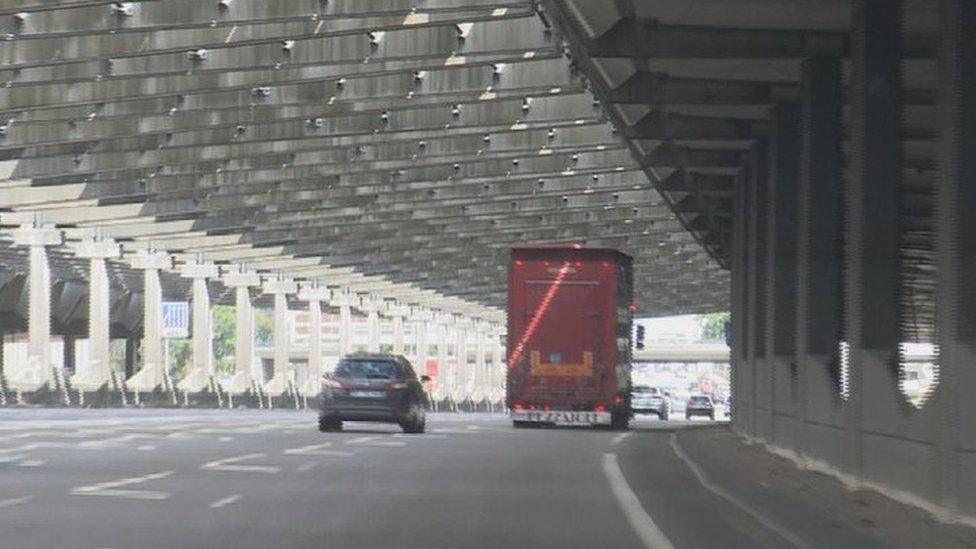How investigating the dark side of dairy changed me
- Published
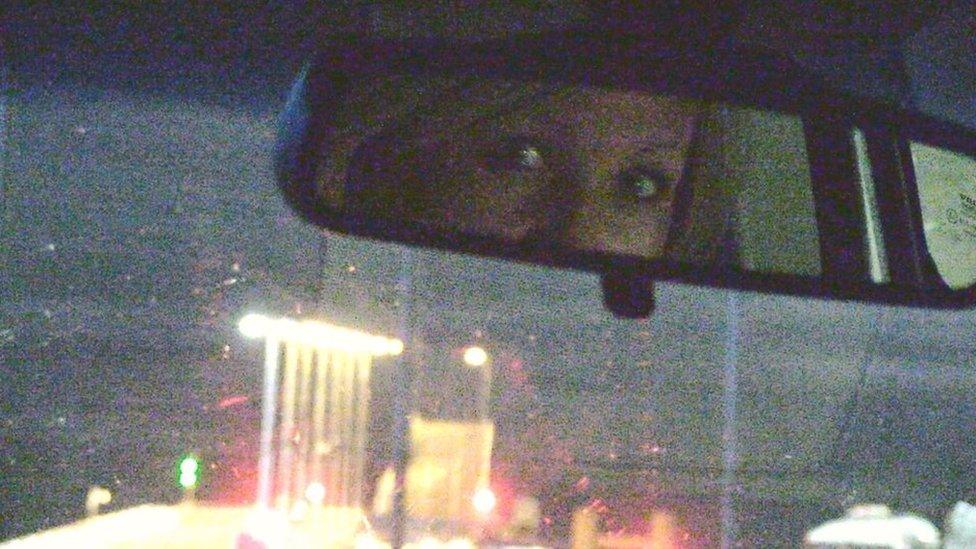
Sam watches the port as she tracks the lorry full of calves
People often ask me what the hardest part of any investigation is, what the moments are which have affected me.
Sometimes I have the answer. Often there will have been a person, a place, a story, something which has stopped me in my tracks and made me think or question why I am doing what I am.
For me, for this film, that moment came in the dead of night.

Sam had spent days on the road tracking the calves
I was in France, in Bourg-en Bresse, sitting in a car in the dark, parked outside a non-descript warehouse in a non-descript industrial estate.
A waste product
I had been on the road for five days. It was my fourth night in a row doing surveillance on a cattle truck which was travelling across Europe with a shipment of animals.
I was trying desperately to investigate the live animal export trade, focusing specifically on the dairy industry and the boy calves which are born into it.
Because they can't join the milking herds, dairy farmers have no use for them and so they are essentially a waste product.
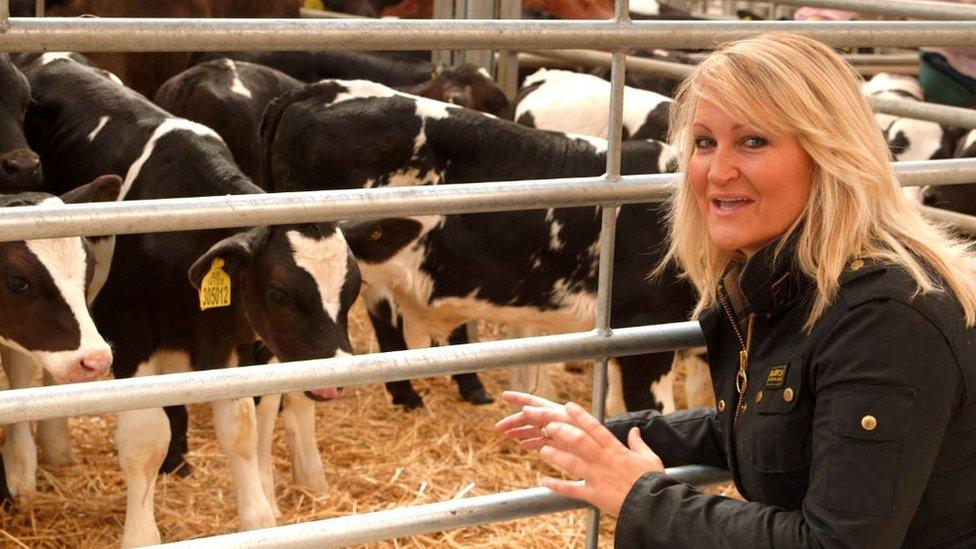
There is no room for the male calves in the dairy herd so they have few options
In fact, in Scotland they are worth so little, that they are either shot at birth or shipped abroad.
I wanted to find out where they were shipped to as well as understand what the long cattle truck journeys would be like for them.
And so I found myself in a car, in an industrial estate, in the dark, in France.

The truck was now parked up, the driver asleep.
The cattle which were being transported had been unloaded into a giant warehouse and fed and were no doubt sleeping after days on the road.
I welcomed the silence and the darkness. It was a chance to catch my breath after the stresses of the previous few days.
And that was when it happened. The moment which stopped me in my tracks.
Just next to where I was parked was another non-descript building.
A truck pulled up and parked inside the yard.
It was a livestock truck, but this one was filled with pigs.
I remember looking at them in the soft amber glow of an old and broken French streetlight, and thinking how nice it was that I was sharing the peace of the night with them.
Silly I know, but in my state of exhaustion I found their company comforting.
It was only when I took out my camera and started to film them that I paid closer attention.
I spotted the sign on the side of the building. It was an abattoir.
The pigs were there for slaughter, no matter the time of night.
The back of the truck they were in opened and, one by one by one, they were led out.
I remember watching them change.
From quiet and inquisitive, poking their snouts through the slats, they began to squeal and push themselves to the back of the truck, as though it would be possible to pretend they weren't there, that the abattoir worker wouldn't see them.
And so the slaughter began.
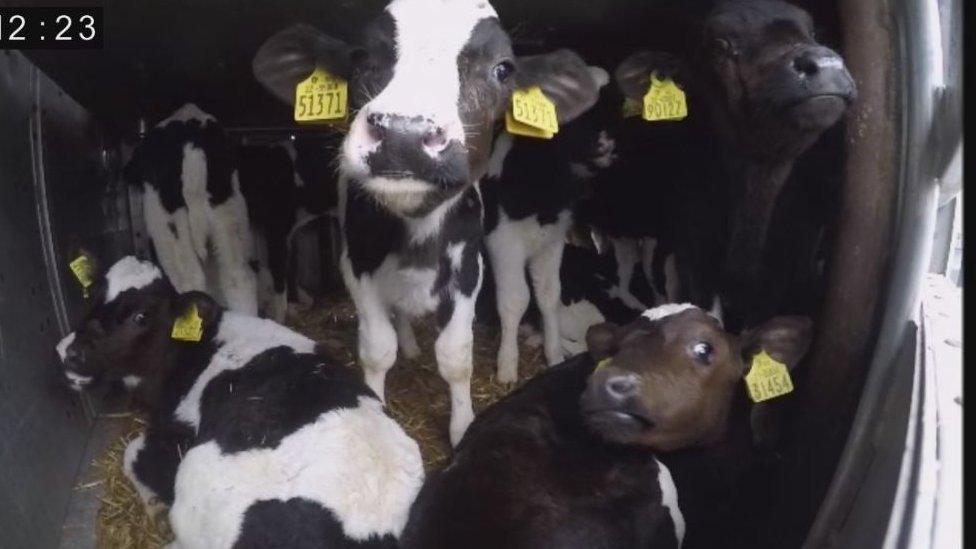
Sam was following a group of calves on a truck bound for Europe when they were just three weeks old
The sounds and the sights from that night have stayed with me.
Not just because I found them shocking, moving almost.
But because I realised it was the first time I was confronted with the reality of where food comes from.
Like so many, I have never fully understood, nor bothered to learn, exactly what happens to bring to the plate what we eat.
The uncomfortable part of any process I have turned a blind eye to. Happily? No. But an eye turned nevertheless. And that has been wrong.
It made me realise, possibly for the first time, that I wasn't just investigating this trade for the audience, for those whom I hoped would watch my efforts and learn something, anything, about what happens in the dairy industry so that choices were made on an informed basis.
I realised I was investigating this trade for me.
The Dark Side of Dairy is on BBC One Scotland on Monday 10 September at 20:30.
- Published10 September 2018
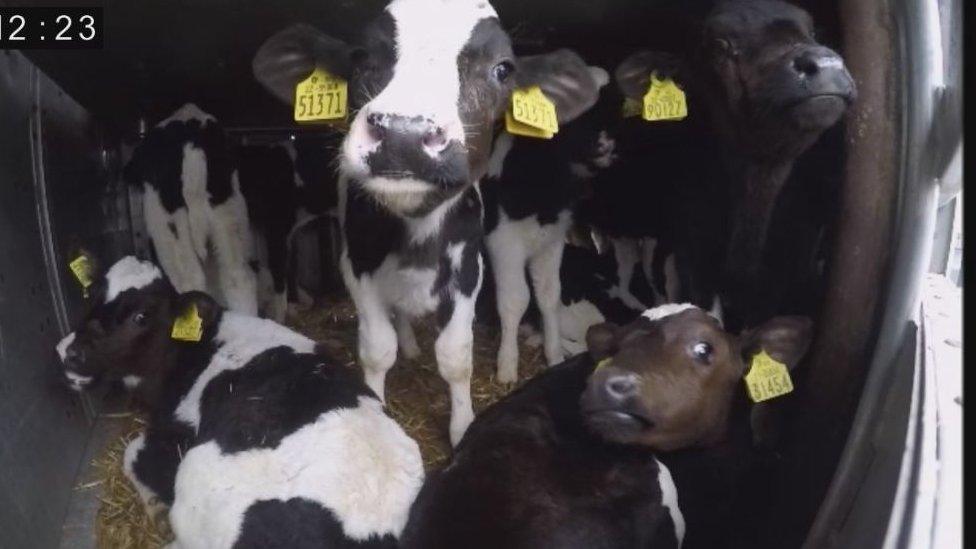
- Published10 September 2018
